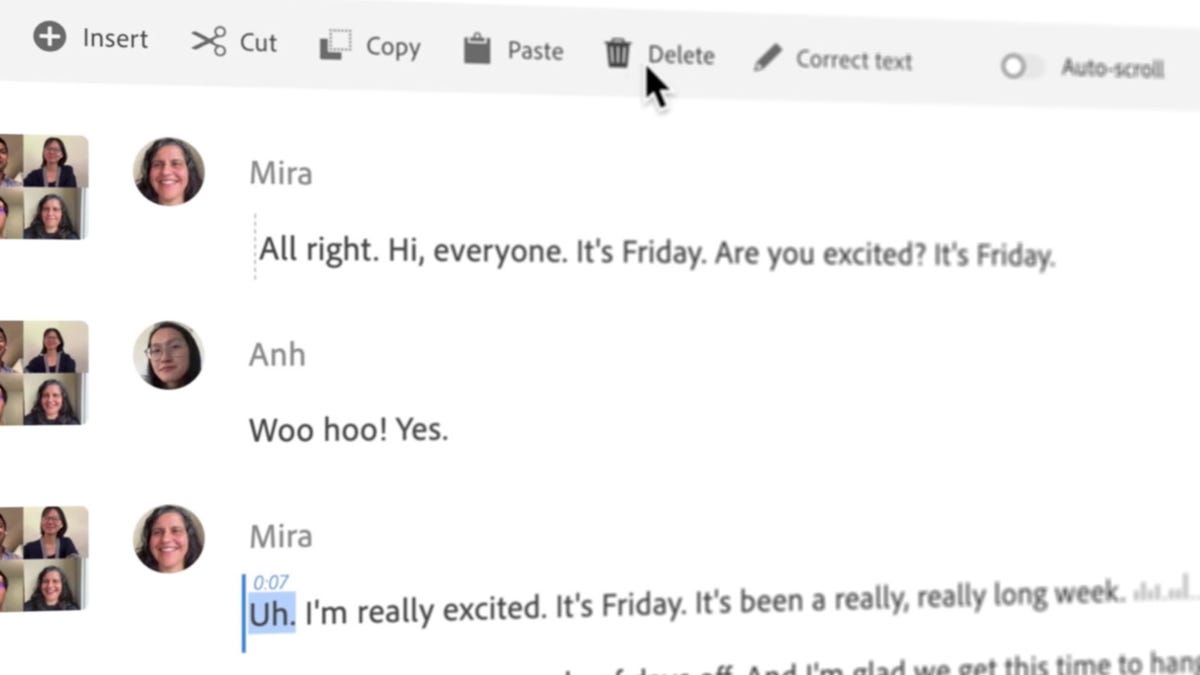Adobe’s Blink AI Tool Makes Video Editing Look Like Word Processing

The Adobe Max conference is geared for photographers, video editors, illustrators and other creative pros.
Adobe
Adobe on Wednesday debuted a video-editing technology called Project Blink?that uses AI to recognize words, people, objects and even emotions in a video to speed up editing. The AI analysis essentially gives a word processing interface to video editing.
The technology lets video editors “edit video in the same way you would edit a text document since our technology transforms the contents of a video into a text-based, searchable transcript,” Adobe exclusively revealed to CNET.
The company showed off Project Blink on Wednesday during its “sneaks” session at its annual Max conference for photographers, video editors, illustrators and other creative types. Blink is a cloud-based service, so you’ll have to upload video to try it out.
After Blink processes a video, you can type words to zero in on a part of the video where they were spoken. A transcript shows the words and identifies the speaker. To trim out extraneous words, you can delete text from the transcript and Blink will edit the video accordingly.

Adobe’s Project Blink is an AI tool that spots words, people, objects and emotions. It lets you search for those elements, then edit text in the transcript to snip out unwanted video elements, like somebody saying “um.”
Adobe
With Blink, you can also type in search terms like “happy” of “laughing” to find people expressing that emotion and type in object names to search for those objects. Once speakers are identified, you can scroll through a transcript of what they’ve said. You can spot long periods of silence and snip them out, too.
Blink shows how much power and importance AI is claiming in computing. Artificial intelligence systems, loosely based on the workings of human brains, can be trained on real-world data to spot patterns and make decisions with vastly more sophistication than was previously possible. AI is revamping other Adobe tools like Lightroom and Photoshop too. A new Lightroom version released at Max can automatically select faces, hair and eyes for quicker editing with human subjects, and Photoshop gets a one-click tool to wipe out a distracting element in a photo.